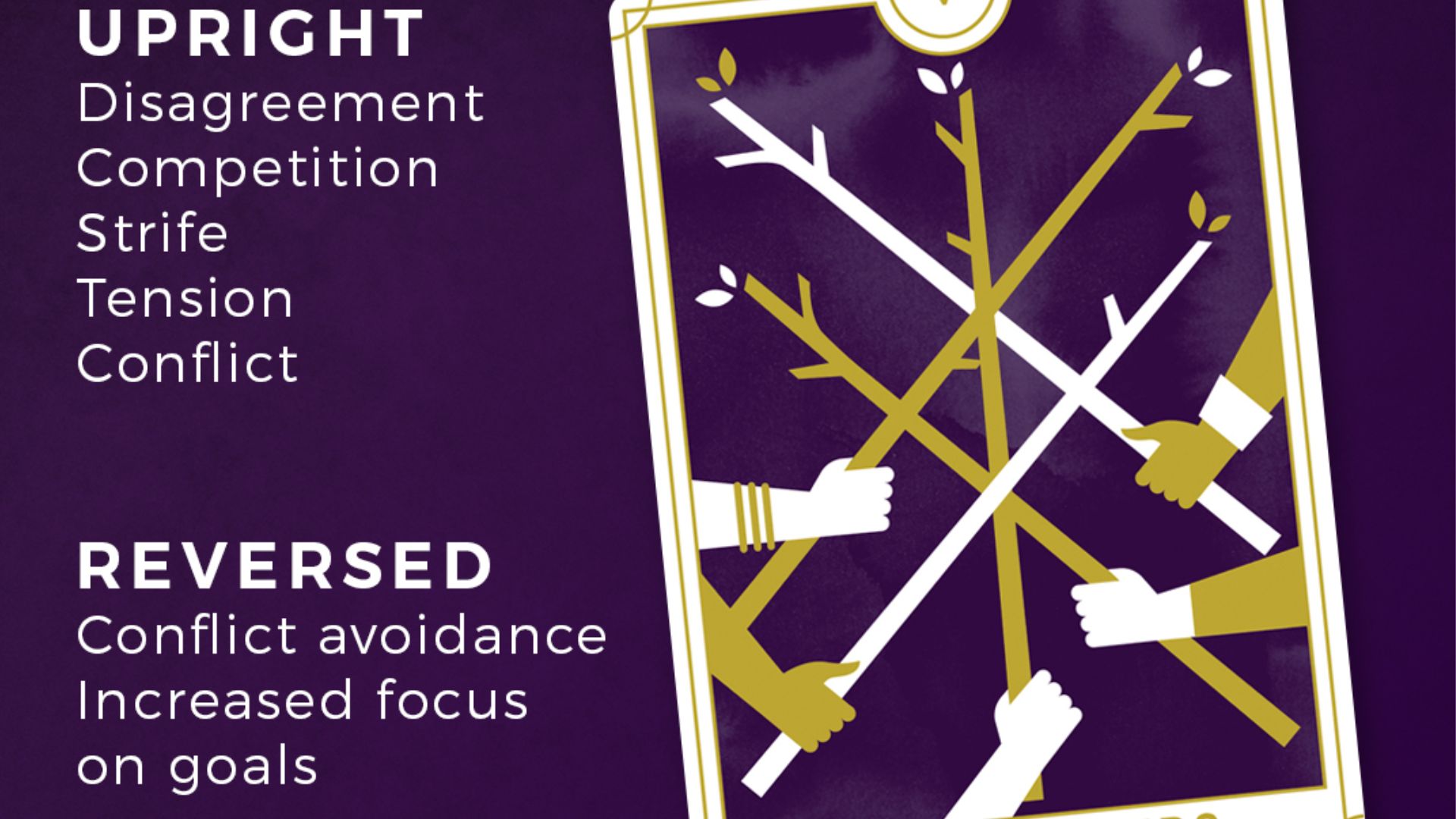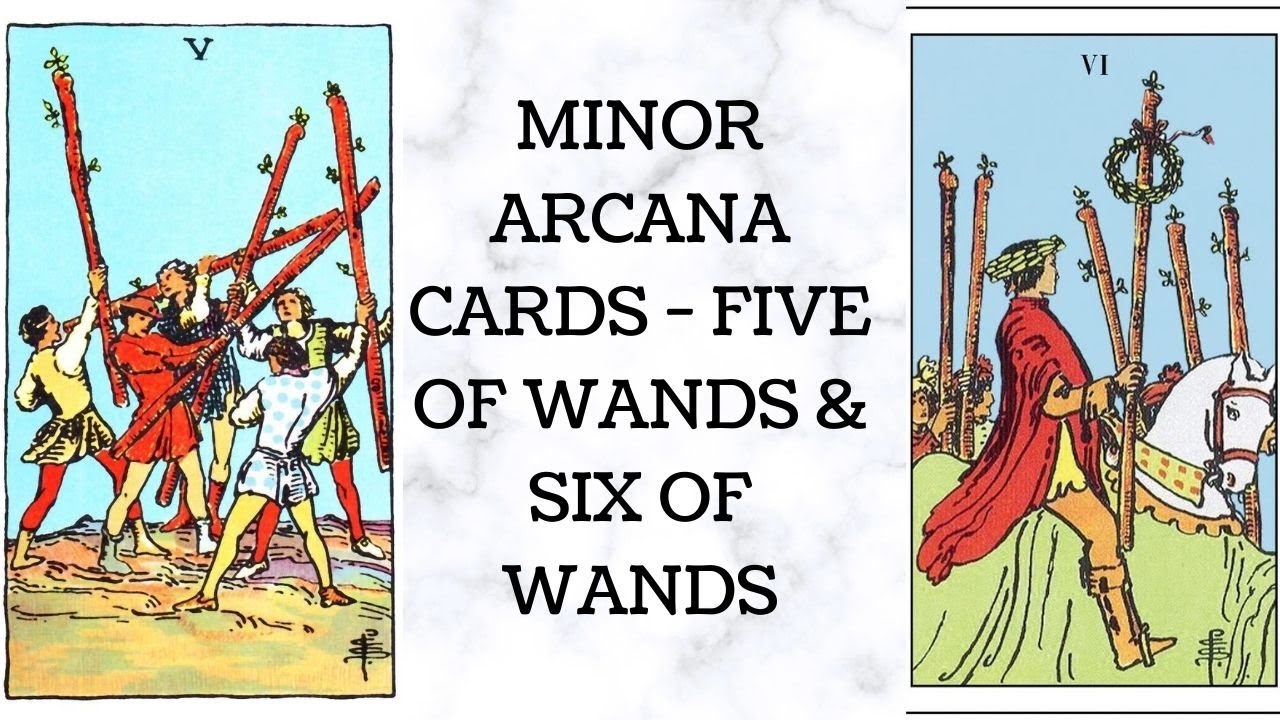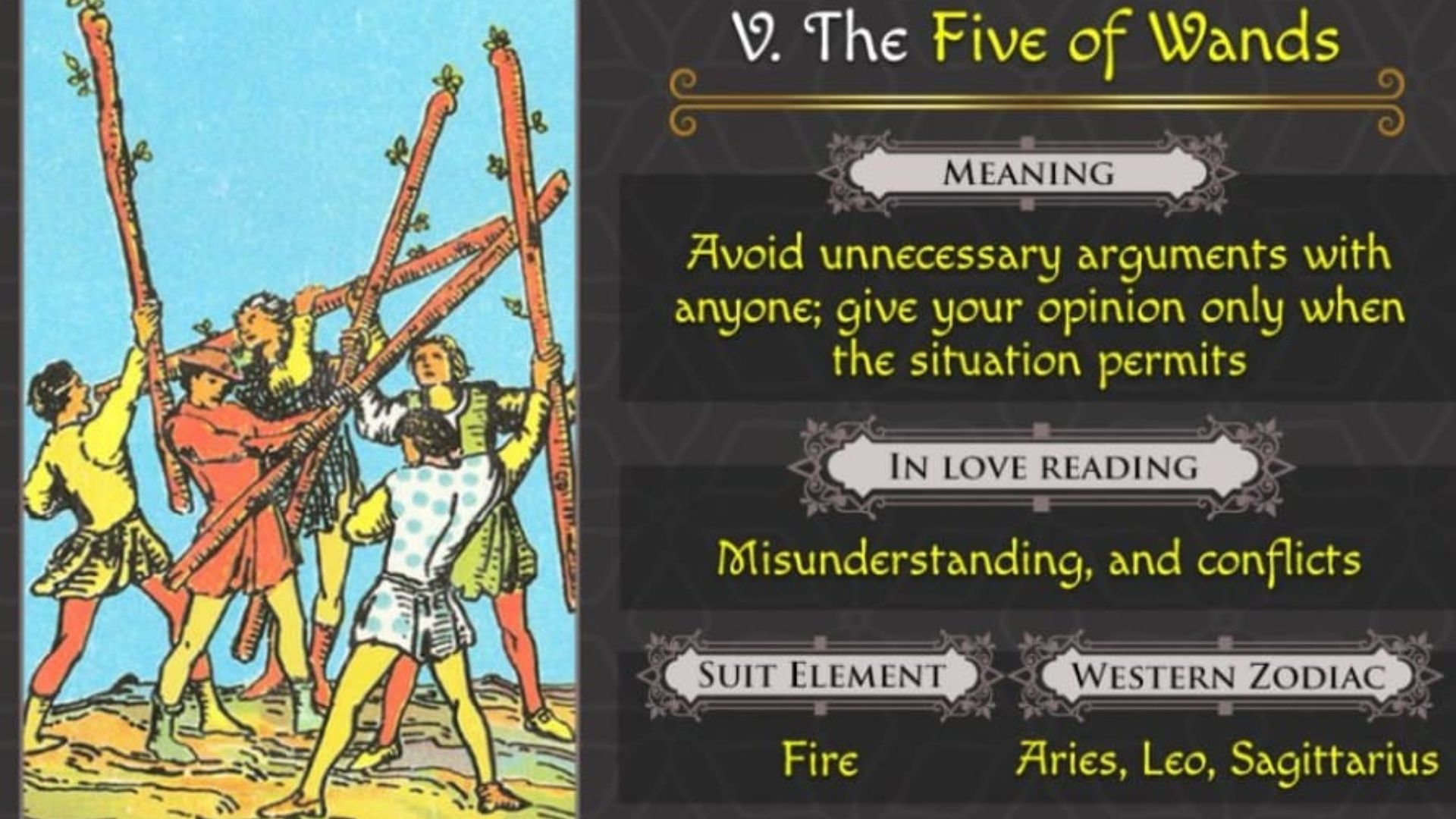Five Of Wands - The Art Of Collaboration
It requires patience, understanding, and a willingness to compromise. The Five of Wands is a tarot card that represents the challenges of collaboration, and the skills we need to overcome them.
Author:Kelly HayesReviewer:Aurora SmithMar 28, 2023371 Shares92.6K Views

Collaboration is a fundamental aspect of human nature. From the earliest times, we have worked together to achieve common goals, build communities, and solve problems. But collaboration is not always easy.
It requires patience, understanding, and a willingness to compromise. The Five of Wandsis a tarot cardthat represents the challenges of collaboration, and the skills we need to overcome them.
What Is The Five Of Wands?
The Five of Wands is one of the Minor Arcana cards in the tarotdeck. It depicts five men holding wands, seemingly in conflict with each other. The men are not fighting, but they are clearly competing for the same goal. The card represents the challenges that arise when we work with others toward a common goal.
The Art Of Collaboration
Collaboration is a skill that can be learned and developed. It requires a set of attitudes and behaviors that are focused on achieving common goals. Here are some key aspects of the art of collaboration:
Listening
One of the most important aspects of collaboration is listening. When we listen to others, we can understand their perspectives, needs, and ideas. This helps us to build trust, empathy, and respect. We can also identify areas of agreement and disagreement, which are essential for effective collaboration.
Communication
Clear communication is essential for collaboration. We need to be able to express our ideas, needs, and concerns in a way that is understandable and respectful. We also need to be able to listen actively to others and respond appropriately.
Flexibility
Collaboration requires flexibility and a willingness to compromise. We need to be open to new ideas and be willing to adjust our own positions to achieve common goals. This can be challenging, especially when we have strong opinions or values.
Trust
Trust is an essential element of collaboration. We need to trust that others will follow through on their commitments, respect our contributions, and work towards common goals. Trust is built over time, through consistent actions and behaviors.
Conflict Resolution
Conflict is inevitable in any collaborative effort. We need to be able to manage conflict constructively, by listening to all perspectives, exploring options, and finding solutions that are acceptable to all parties. Conflict can be an opportunity for growth and learning, but it requires skill and patience.
Collaboration In Action
Collaboration can take many forms, from simple cooperation to complex partnerships. Here are some examples of collaboration in action:
Community Projects
Community projects are a great way to practice collaboration skills. They often involve diverse groups of people, with different perspectives and interests. By working together, we can achieve common goals that benefit everyone.
Business Partnerships
Business partnerships are essential for many companies. They enable companies to pool resources, expertise, and markets. Successful partnerships require trust, communication, and flexibility.
Creative Collaborations
Creative collaborations, such as art projects or music performances, require a high level of collaboration. They involve multiple artists, each with their own vision and style. By working together, they can create something that is greater than the sum of its parts.
Overcoming The Challenges Of Collaboration
Collaboration is not always easy. It requires patience, understanding, and a willingness to compromise. Here are some strategies for overcoming the challenges of collaboration:
Define Goals And Roles
Clear goals and roles are essential for effective collaboration. Everyone needs to understand what they are working towards, and what their role is in achieving those goals. This helps to minimize confusion and conflict.
Establish Trust And Respect
Trust and respect are essential elements of collaboration. They are built through consistent actions and behaviors. We need to be reliable, respectful, and accountable to others. We also need to acknowledge the contributions of others and show appreciation for their efforts.
Practice Active Listening
Active listening is an important skill for effective collaboration. We need to listen carefully to others, seek to understand their perspectives and ask questions to clarify any misunderstandings. This helps to build trust, empathy, and respect.
Communicate Clearly
Clear communication is essential for collaboration. We need to be able to express our ideas, needs, and concerns in a way that is understandable and respectful. We also need to be able to listen actively to others and respond appropriately.
Embrace Diversity
Diversity is an important aspect of collaboration. It brings different perspectives, experiences, and skills to the table. We need to embrace diversity and be open to new ideas and approaches. This can be challenging, especially when we have strong opinions or values.
Manage Conflict Constructively
Conflict is inevitable in any collaborative effort. We need to be able to manage conflict constructively, by listening to all perspectives, exploring options, and finding solutions that are acceptable to all parties. Conflict can be an opportunity for growth and learning, but it requires skill and patience.
The Importance Of Active Listening
Active listening is a critical skill in collaboration. It involves focusing on the speaker, understanding their perspective, and providing feedback that shows that you are listening.
Active listening requires concentration and attention to the nuances of what is being said. It means not only hearing the words but also understanding the tone, body language, and emotions behind them.
Active listening helps to build trust and respect in collaborative teams. It ensures that everyone feels heard and valued and that their opinions are taken seriously. It can also help to prevent misunderstandings and conflicts by ensuring that everyone is on the same page.
To practice active listening, you should be fully present in the conversation, avoid interrupting or judging, and ask clarifying questions. Repeat back what you have heard to ensure that you have understood it correctly, and express empathy and support.
How To Foster Creativity In Collaborative Teams?
Collaboration can be a powerful tool for fostering creativity. By bringing together people with diverse skills, experiences, and perspectives, you can generate new ideas, approaches, and solutions. However, it can also be challenging to ensure that everyone's creativity is encouraged and valued.
To foster creativity in collaborative teams, you should create an environment that encourages experimentation, risk-taking, and exploration.
Provide space and time for brainstorming and ideation, and encourage people to share their ideas openly and without judgment. Create a culture of trust and respect where everyone's ideas are valued.
You can also use techniques like design thinking, agile development, or other creativity-enhancing frameworks to help guide the collaborative process. These methodologies can provide structure and support while still allowing for flexibility and experimentation.
Learning From Failure In Collaborative Projects
Collaborative projects can be fraught with challenges and setbacks. Sometimes, despite our best efforts, things donot go as planned, and we are left to pick up the pieces. However, these failures can also provide valuable learning opportunities.
To learn from failure in collaborative projects, you should take the time to reflect on what went wrong and why. Identify the factors that contributed to the failure and brainstorm ways to prevent similar failures in the future. Be open to feedback from others and use it to inform your future collaborations.
It is also essential to maintain a growth mindset and view failure as an opportunity for learning and improvement. Failure is a natural part of the creative process, and we can use it to refine our approaches and strategies.

FIVE OF WANDS & SIX OF WANDS - HOW TO READ MINOR ARCANA CARD - LEARN TAROT READING IN HINDI
Using Technology To Enhance Collaboration
Technology can be a powerful tool for enhancing collaboration. It can facilitate communication, streamline processes, and provide access to resources and information. There are many different tools and platforms available that can be used to support collaborative efforts.
Some popular collaboration tools include project management software, video conferencing platforms, shared workspaces, and communication apps. These tools can help to break down geographic barriers and facilitate communication and collaboration across time zones and locations.
However, it is essential to use technology strategically and thoughtfully. Too much technology can be overwhelming and create a barrier to effective communication and collaboration. It is important to strike a balance between technology and face-to-face interaction and ensure that everyone in the team is comfortable using the technology.
People Also Ask
How Can Leaders Encourage Innovation In Collaborative Teams?
Leaders can encourage innovation by setting clear goals and objectives, promoting experimentation, and providing a safe space for risk-taking.
How Can Feedback Be Used To Improve Collaborative Processes?
Feedback can be used to identify areas of improvement, celebrate successes, and promote a culture of continuous learning and improvement.
What Are Some Tools That Can Be Used For Collaborative Brainstorming?
Popular tools for collaborative brainstorming include Miro, Trello, and Google Jamboard.
How Can Diversity Enhance Collaboration In A Team?
Diversity can bring different perspectives and experiences to the team, leading to more creative and innovative solutions.
How Do You Navigate Cultural Differences In A Collaborative Project?
To navigate cultural differences, it is important to research and understand cultural norms, communicate openly and respectfully, and be willing to adapt and compromise.
Conclusion
Collaboration is a fundamental aspect of human nature. It requires patience, understanding, and a willingness to compromise. The Five of Wands represents the challenges of collaboration, and the skills we need to overcome them.
By embracing the art of collaboration, we can work together to achieve common goals, build communities, and solve problems. Whether in community projects, business partnerships, or creative collaborations, effective collaboration requires clear goals, trust, communication, diversity, and conflict resolution.

Kelly Hayes
Author
Kelly Hayes is a seasoned journalist with over 10 years of experience, specializing in news reporting and horoscope analysis. She holds a Bachelor's degree in Journalism from New York University, enhancing her credibility and expertise in the field.
Kelly's writing style is characterized by clarity, depth, and a commitment to delivering credible information. Her published works across various platforms showcase her knack for engaging storytelling and insightful analysis.
Readers trust Kelly's expertise in both current events and astrological interpretations, making her a sought-after authority in journalism.
Apart from her professional activities, Kelly enjoys exploring new cultures, practicing yoga, and engaging in philanthropic activities.

Aurora Smith
Reviewer
Aurora Smith is an expert with over 8 years in psychics, with a passion for tarot reading.
She holds a Bachelor of Arts in Anthropology from Stanford University, bringing a strong academic foundation to her work in exploring mystical phenomena.
With her expertise in psychics, Aurora delves into tarot readings and magical practices, providing insightful content that engages and enlightens readers.
Her writing style is characterized by clarity and engagement, making complex concepts accessible and intriguing for readers.
Outside of her writing pursuits, Aurora enjoys delving into the mysteries of the supernatural world and practicing tarot readings.
Latest Articles
Popular Articles
